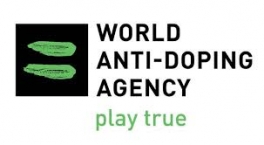Perspectives on the Regulation of Doping: Amending the WADA Code and the Utility of our Current Approach

By Associate Professor Deborah Healey, UNSW
SYDNEY: 20 SEPTEMBER 2013
The primary weapon against the use of performance enhancing drugs in sport is the World Anti-Doping Code, known as the “WADA Code”. Countless explosive controversies relating to drug use have dominated sporting discourse in Australia and the rest of the world for most of the last two years. From Lance Armstrong and his eventual admissions of doping, to baseball superstar Alex Rodrigues; from the 107 athletes reportedly prohibited from competing at the London Olympics, to the problems facing professional football codes in Australia, the time, energy and attention which has been focussed on the area of doping is nothing short of monumental. Given the importance of sport to the community and the impact of a doping finding on an athlete, a team and the fans, media commentary may also be sensationalist and unhelpful.
The major reason for the regulation of doping is the creation of a level playing field for “pure” competition. But is it time to reconsider some of the assumptions which underscore our doping regulation, and the way in which our quest for a level playing field is currently implemented?
In a recent New Yorker article, the celebrated author Malcolm Gladwell stated the obvious when he said: “Elite sport is a contest among athletes with an uneven set of natural advantages.” Gladwell was making the point that society wants sport to be fair and takes elaborate measures to make sure that no one competitor has an advantage in terms of the use of performance enhancing drugs. He adds, however, that there can never be a contest among equals due to the physical differences between individuals. He details some of the physical traits of individual athletes which enhance their prospects in competition and also the physical and medical changes athletes can make to improve their performance. Obviously physical characteristics are not generally regulated (except in sports which have different competitions according to weight). Neither are various forms of corrective surgery. So there are already significant shortcomings for the logical basis of the creation of a level playing field in sport in our failure and or inability to generally address physical differences.
Then there is the WADA Code itself. The general concept of regulation today is broader than it has ever been– it encompasses governance with control emanating from both public and private actors through law, private agreements and other control mechanisms. The WADA Code appears to be an example of modern regulation – a co-operative approach to regulation by governments and stakeholders; a true attempt to address the areas of technical, social and political risk which are the focus of modern regulation. Regular review, consultation and thorough transparency of the development processes suggest that optimal regulation is possible.
But arguably the complexity of the subject matter on a number of levels militates against the comprehensibility and ultimately the reasonableness of the Code.
The need for athletes and others bound by the Code to understand its principles of liability and punishment is an important issue. Despite significant efforts within many jurisdictions to educate those in sport, the Code provisions are so complex that any level of understanding beyond the superficial is extremely difficult, even for the well educated. In addition, athletes are so focused on their performance goals that detailed investigation of the Code provisions by them is generally unlikely, despite their importance.
Then there are the complexities and perils of the Prohibited List itself. The Prohibited List contains a very large number of banned substances under scientific names, and a general catch –all provision aimed at “other substances with a similar chemical structure or similar biological effect”. There are also Prohibited Methods. The reason for the inclusion of the catch- all is obvious but it further complicates the identification of risky products for the athlete.
One might well say that if athletes took nothing they would not need to worry about the intricacies of the Prohibited List. But the fact is that in addition to the complexity of the contents, over the counter pharmaceutical products and remedies for a host of minor ailments such as a cold or rash hold the risk of containing substances on the Prohibited List. International athletes travelling between jurisdictions have found that products which are innocuous in their own jurisdictions are problematic in others because of different content. In addition, constant high intensity training and competition mean that athletes regularly resort to supplements which are sometimes mislabelled. The strict liability imposed by the Code is unforgiving in all of these areas.
Add to these issues other problematic areas such as the complexity of sanctions for teams, the difficulty and intrusion of provisions on “whereabouts information”, and criticisms which have been made about the approach of testing regimes, and it is clear that numerous problems remain. The Code will be amended for 2015 and it is hard to anticipate that the regime will become any easier to deal with.
The need for consistent application of the Code provisions by tribunals hearing doping violations world-wide is also a massive challenge. These tribunals do not have the training or resources of the court system proper, and adjudicators and participants may not have access to important information or other decisions which might affect outcomes.
With many sports underfunded and struggling to deal with the complexities of governance generally, the onerous impositions of the WADA Code are another impost on time and energy. This is despite the fact that most in sport would probably wholeheartedly affirm the objectives of the exercise. One has to ask: is there a better way?


Add new comment